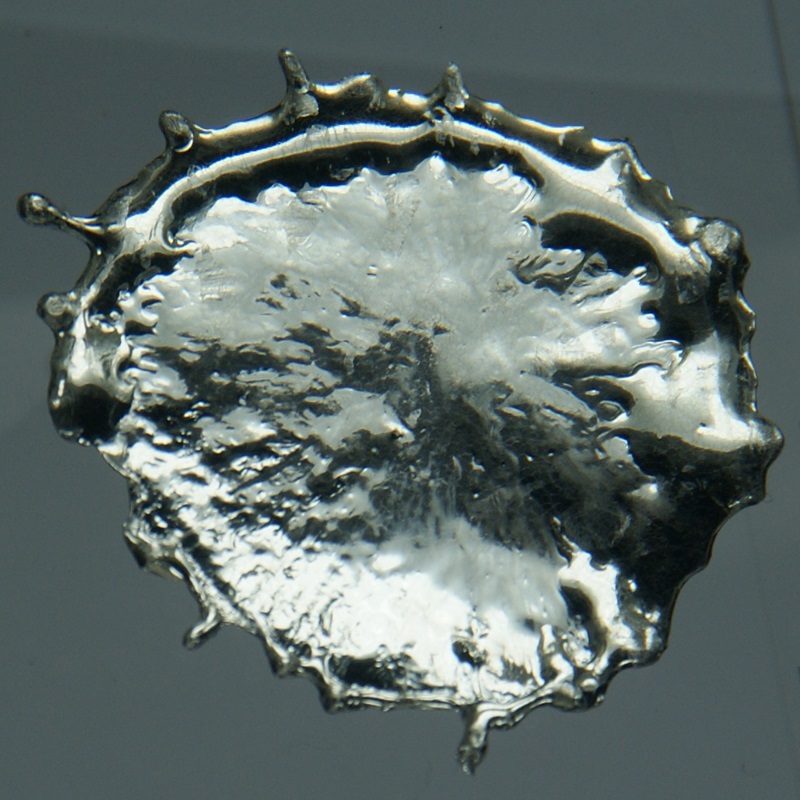Estany
50
Sn
Grup
14
Període
5
Bloc
p
Protons
Electrons
Neutrons
50
50
69
Propietats Generals
Nombre atòmic
50
Massa atòmica
118,71
Nombre de massa
119
Categoria
Metalls post-transició
Color
Plata
Radioactiu
No
The Latin word for tin is stannum
Estructura cristal·lina
Tetragonal centrada
Història
Tin was first smelted in combination with copper around 3500 BC to produce bronze.
The oldest artifacts date from around 2000 BC.
Cassiterite, the tin oxide form of tin, was most likely the original source of tin in ancient times.
British scientist Robert Boyle published a description of his experiments on the oxidation of tin in 1673.
The oldest artifacts date from around 2000 BC.
Cassiterite, the tin oxide form of tin, was most likely the original source of tin in ancient times.
British scientist Robert Boyle published a description of his experiments on the oxidation of tin in 1673.
Electrons per capa
2, 8, 18, 18, 4
Configuració electrònica
[Kr] 4d10 5s2 5p2
When a bar of tin is bent, a crackling sound known as the tin cry can be heard
Propietats Físiques
Fase
Sòlid
Densitat
7,287 g/cm3
Punt de fusió
505,08 K | 231,93 °C | 449,47 °F
Punt d'ebullició
2875,15 K | 2602 °C | 4715,6 °F
Entalpia de fusió
7 kJ/mol
Entalpia de vaporització
290 kJ/mol
Capacitat tèrmica específica
0,228 J/g·K
Abundància a l'escorça terrestre
0,00022%
Abundància a l'univers
4×10-7%

Número CAS
7440-31-5
Número CID de PubChem
5352426
Propietats Atòmiques
Radi atòmic
140 pm
Radi covalent
139 pm
Electronegativitat
1,96 (Escala de Pauling)
Potencial d'ionització
7,3439 eV
Volum atòmic
16,3 cm3/mol
Conductivitat tèrmica
0,666 W/cm·K
Estats d'oxidació
-4, 2, 4
Aplicacions
Tin is used as a coating on the surface of other metals to prevent corrosion.
It has long been used as a solder in the form of an alloy with lead.
Tin salts sprayed onto glass are used to produce electrically conductive coatings.
Tin chloride is used as a mordant in dyeing textiles and for increasing the weight of silk.
It has long been used as a solder in the form of an alloy with lead.
Tin salts sprayed onto glass are used to produce electrically conductive coatings.
Tin chloride is used as a mordant in dyeing textiles and for increasing the weight of silk.
Tin is considered to be non-toxic but most tin salts are toxic
Isòtops
Isòtops estables
112Sn, 114Sn, 115Sn, 116Sn, 117Sn, 118Sn, 119Sn, 120Sn, 122Sn, 124SnIsòtops inestables
99Sn, 100Sn, 101Sn, 102Sn, 103Sn, 104Sn, 105Sn, 106Sn, 107Sn, 108Sn, 109Sn, 110Sn, 111Sn, 113Sn, 121Sn, 123Sn, 125Sn, 126Sn, 127Sn, 128Sn, 129Sn, 130Sn, 131Sn, 132Sn, 133Sn, 134Sn, 135Sn, 136Sn, 137Sn